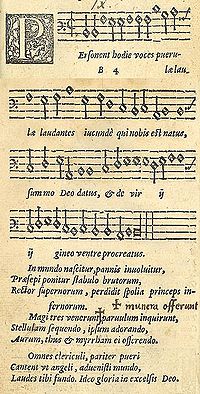
-
МјРЇСІИёСЖШИМі
-
 Malacañang Palace-Official Residence of the Pres
Malacañang Palace-Official Residence of the Pres 138,879
138,879 -
 Amana Water Park
Amana Water Park 115,400
115,400 -
 IFUGAO TRIBE
IFUGAO TRIBE 109,383
109,383 -
 Santacruzan-The Queen of all Filipino Festivals109,269
Santacruzan-The Queen of all Filipino Festivals109,269 -
 Water Refilling Station: an alternative source of drink107,158
Water Refilling Station: an alternative source of drink107,158 -
 LAMBANOG-THE POOR MAN\'S DRINK104,512
LAMBANOG-THE POOR MAN\'S DRINK104,512 -
 Christmas Parol [lantern in English]104,359
Christmas Parol [lantern in English]104,359 -
 HANGING RICE97,032
HANGING RICE97,032 -
 Taoist Temple93,994
Taoist Temple93,994 -
 Corn Fields in the Philippines90,466
Corn Fields in the Philippines90,466
''CAROLING IN THE
PHILIPPINES''
A Christmas carol (also called a noël) is a carol (song or hymn)
whose lyrics are on the theme of Christmas or the winter season
in general, and which is traditionally sung in the period
immediately surrounding the holiday. Christmas carols may
be regarded as a subset of the broader category of Christmas music.
History

The first specifically Christmas hymns for Christians that we know
of appear in fourth century Rome. Latin hymns such as
Veni redemptor gentium, written by Ambrose, Archbishop of Milan,
were austere statements of the theological doctrine of the Incarnation
in opposition to Arianism. Corde natus ex Parentis
(Of the Father's love begotten) by the Spanish poet Prudentius
(d. 413) is still sung in some churches today.[1]
In the ninth and tenth centuries, the Christmas "Sequence" or "Prose"
was introduced in North European monasteries, developing under
Bernard of Clairvaux into a sequence of rhymed stanzas. In the
twelfth century the Parisian monk Adam of St. Victor began to derive
music from popular songs, introducing something closer to the traditional Christmas carol.
In the thirteenth century, in France, Germany, and particularly, Italy,
under the influence of Francis of Assisi a strong tradition of popular
Christmas songs in the native language developed.[2] Christmas
carols in English first appear in a 1426 work of John Awdlay, a
Shropshire chaplain, who lists twenty five "caroles of
Cristemas", probably sung by groups of 'wassailers', who went
from house to house.[3] The songs we know specifically as
carols were originally communal songs sung during celebrations
like harvest tide as well as Christmas. It was only later that
carols begun to be sung in church, and to be
specifically associated with Christmas.
Carols gained in popularity after the Reformation in the
countries where Protestant churches gained prominence
(as well-known Reformers like Martin Luther authored
carols and encouraged their use in worship), this was the
consequence of the fact that the Lutheran reformation
warmly welcomed music.[4]
"Adeste Fideles" ("O Come all ye faithful") appears in its
current form in the mid-18th century, although the words
may have originated in the thirteenth century. The origin
of the tune is disputed. The first appearance in print of
"God Rest Ye Merry, Gentlemen", "The First Noel",
"I Saw Three Ships" and "Hark! The Herald Angels Sing"
was in Christmas Carols Ancient and Modern (1833)
by William Sandys. Composers like Arthur Sullivan
helped to repopularize the carol, and it is this period
that gave rise to such favorites as "Good King Wenceslas"
and "It Came Upon the Midnight Clear", a New England
carol written by Edmund H. Sears and Richard S. Willis.
Today carols are regularly sung at
Christian religious services.
Some compositions have words which are clearly not of a
religious theme, but are often still referred to as "carols"
. For example, the sixteenth century song "A Bone, God Wot!"
appears to be a wassailing song (which is sung during drinking
or while requesting ale), but is described in the British Library's
Cottonian Collection as a Christmas carol.[
INSTRUMENT :
- ЁЄfYGbJbhcBF

- ЁЄfYGbJbhcBF

- ЁЄfYGbJbhcBF

- ЁЄfYGbJbhcBF

- ЁЄfYGbJbhcBF

- ЁЄfYGbJbhcBF

- ЁЄfYGbJbhcBF

- ЁЄfYGbJbhcBF

- ЁЄfYGbJbhcBF

- ЁЄfYGbJbhcBF

- ЁЄfYGbJbhcBF

- ЁЄfYGbJbhcBF

- ЁЄfYGbJbhcBF

- ЁЄfYGbJbhcBF

- ЁЄfYGbJbhcBF




- ЁЄSaDEVEqmgq

- ЁЄSaDEVEqmgq

- ЁЄSaDEVEqmgq\'\"\\(

- ЁЄSaDEVEqmgqщ\'\"\\(

- ЁЄSaDEVEqmgq

- ЁЄSaDEVEqmgq

- ЁЄSaDEVEqmgq

- ЁЄSaDEVEqmgq

- ЁЄSaDEVEqmgq

- ЁЄSaDEVEqmgq

- ЁЄSaDEVEqmgq

- ЁЄSaDEVEqmgq

- ЁЄSaDEVEqmgq

- ЁЄSaDEVEqmgq

- ЁЄSaDEVEqmgq




- ЁЄqpvwYmzPrC

- ЁЄqpvwYmzPrC

- ЁЄqpvwYmzPrC

- ЁЄqpvwYmzPrC

- ЁЄqpvwYmzPrC

- ЁЄqpvwYmzPrC

- ЁЄqpvwYmzPrC

- ЁЄqpvwYmzPrC

- ЁЄqpvwYmzPrC\'\"\\(

- ЁЄqpvwYmzPrCщ\'\"\\(

- ЁЄqpvwYmzPrC

- ЁЄqpvwYmzPrC

- ЁЄqpvwYmzPrC

- ЁЄqpvwYmzPrC

- ЁЄqpvwYmzPrC














 ЧЪРкДхФФ ОпАЃЛѓДу ПРЧТ
ЧЪРкДхФФ ОпАЃЛѓДу ПРЧТ 11ГтПЌМг МвКёРкИИСЗ 1РЇ
11ГтПЌМг МвКёРкИИСЗ 1РЇ
 ГЛАд ИТДТ ОюЧаПј УЃБт
ГЛАд ИТДТ ОюЧаПј УЃБт
 ИЎОѓ ЧаБГ ЙцЙЎБт
ИЎОѓ ЧаБГ ЙцЙЎБт
 СжИЛПЁ ГЛАЁ ОЕ КёПыРК?
СжИЛПЁ ГЛАЁ ОЕ КёПыРК? УжАэАЁМККё РЬКЅЦЎ СёБтБт
УжАэАЁМККё РЬКЅЦЎ СёБтБт
 ЧіСіПЁМЕЕ ЧЪРкДхФФ!
ЧіСіПЁМЕЕ ЧЪРкДхФФ! ЧіСіПЁМ АЁДЩЧб
ЧіСіПЁМ АЁДЩЧб









 ЧЪРк ЦЏБо Ч§ХУ! ФСНУОюСі МКёНК
ЧЪРк ЦЏБо Ч§ХУ! ФСНУОюСі МКёНК



 АЁСЗПЌМіЗЮ ДйЧдАд ОзЦМКёЦМ
АЁСЗПЌМіЗЮ ДйЧдАд ОзЦМКёЦМ






























